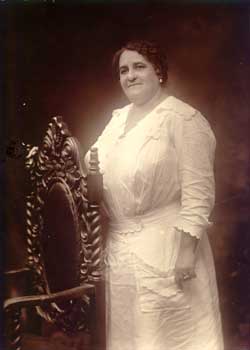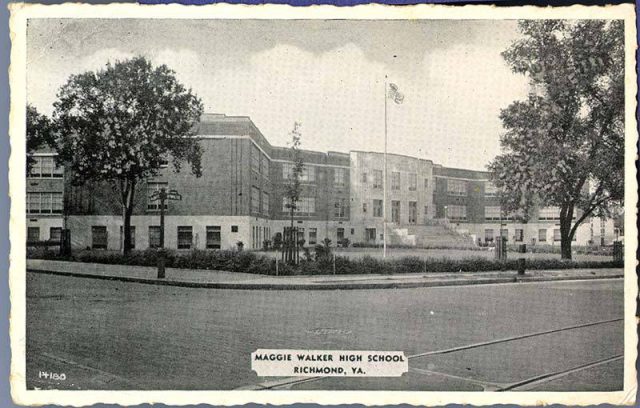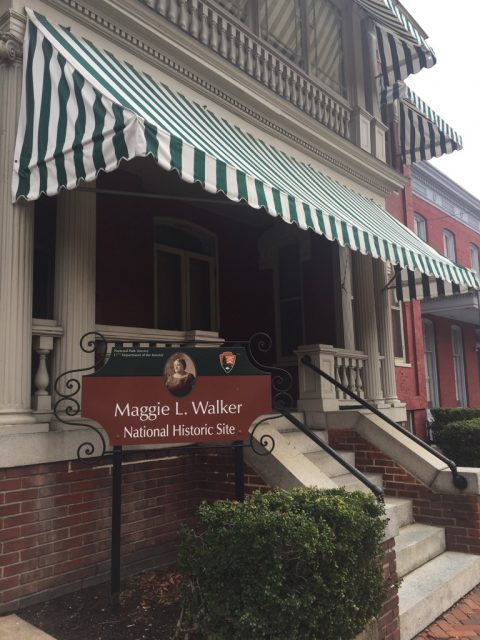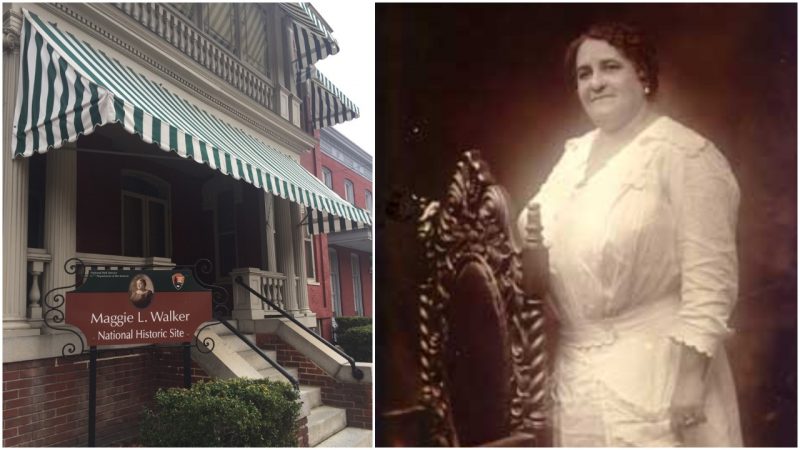Ambitious and driven, Maggie Walker managed to push past racial and gender discrimination in the early 20th century to launch a weekly newspaper for African Americans. When she founded the St. Luke Penny Savings Bank, she was the first woman to hold the title of bank president—of any race.
Maggie Lena (Mitchell) Walker was born in Richmond, Virginia, on July 15, 1864. Her mother was a former slave and a cook in the house of an abolitionist and Civil War spy; her biological father was an Irish-born writer. Her mother later married the estate’s butler, William Mitchell, and the family moved to Richmond’s Jackson Ward, the central district of African-American business and social life at the turn of the century, known as the Harlem of the South.
When her stepfather died, Maggie helped her mother’s work as a laundress by delivering clean clothes to white patrons. Nonetheless, Maggie stayed in school and after graduating at the top of her class, she taught for three years. She quit when she got married to a prosperous black contractor, a member of her church, and had two boys.

Though she no longer taught, Maggie Walker was a woman of considerable energies. As a teenager, she had become involved with a local organization called the Independent Order of St. Luke, a fraternal burial society dedicated to helping African American families pay for death benefits. She rose in rank to the highest position of Right Worthy Grand Secretary in 1899 and not only saved the order from bankruptcy but increased its scope to provide insurance for African American families denied benefits by white society.
Walker was by all accounts an elegant speaker with grand ambitions. At the 1901 annual convention of the Independent Order of St. Luke, she laid out her vision for the future, which included the formation of bank, an emporium, and a newspaper.
To strengthen communication between the Order and the public, Walker founded a weekly newspaper, The St. Luke Herald, written, edited, and published by and for African Americans. Subscription and readership steadily grew, and by 1929, the Herald had become Richmond’s leading black weekly newspaper (amazingly, it had three competitors). The paper’s primary purpose was to report on St. Luke’s economic ventures, but given the times, it also published stories on civil rights abuses suffered by the African American community. Its very first editorial boldly promised to fight social injustice, mob rules, Jim Crow Laws, and segregation. Sadly, the paper did not survive economic hardships of the Depression; it turned into a monthly newsletter and eventually folded in the 1980s.
The bank was topmost in her mind, because financial institutions represented the peak of success and respectability. “First we need a savings bank,” Walker said at the 1901 convention. “Let us put our moneys together; let us use our moneys; let us put our money out at usury among ourselves, and reap the benefit ourselves. Let us have a bank that will take the nickels and turn them into dollars.”

African-American banks provided the space for customers to conduct business free from white prejudice and usury. Walker’s bank wasn’t the first in Richmond. In 1888, the True Reformers became the first African American fraternal organization granted the first charter to open a bank. There were five other African American banks in Richmond. But hers was the first to be founded and led by a woman of any race.
Walker’s accomplishment was noted and even respected by the white community. The Virginia Bankers Association extended membership to her, which it had denied all the other presidents of the black-owned banks in Richmond. She accepted, saying, “I shall hope to conduct myself so as to reflect credit upon my race and people.”
To prepare herself for the position, Walker spent two hours a day at the white-owned Merchants National Bank of Richmond, studying procedures and operations of the bank, according to a National Park Services biography. On November 2, 1903, the St. Luke Penny Savings Bank opened for business at 900 St. James Street. Customers deposited amounts ranging from a few hundred dollars down to 31 cents. President Maggie Walker earned $25 per week for her position.

During the 1920s, many African-American-owned banks suffered financial difficulties. St. Luke Penny Savings managed to survive that time, and the subsequent Great Depression, by merging with other black-owned banks. Maggie Walker served as the Chairman of the Board of Directors of the Consolidated Bank and Trust until her death in 1934. She was also a member of the National Association of Colored Women, and the vice president of the Richmond chapter of the National Association for the Advancement of Colored People.
Walker’s bank survived into the 21st century. In 2005, Abigail Adams National Bank bought Consolidated, ending its run as the oldest continually run black-owned bank in the country.
Maggie Walker’s house, restored to its original elegance, at 110 ½ E. Leigh Street, along with several surrounding buildings, today serves as a historical site operated by the National Park Service. Park guides provide a one-hour tour of the building and her incredible life as a community leader and activist. A former Consolidated bank, now called Premiere, still operates at the corner of First and Marshall Streets in Richmond, a historical symbol of black prosperity in the face of great odds.
E.L. Hamilton has written about pop culture for a variety of magazines and newspapers, including Rolling Stone, Seventeen, Cosmopolitan, the New York Post and the New York Daily News. She lives in central New Jersey, just west of New York City
